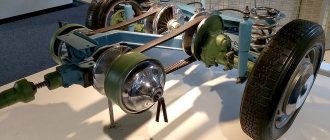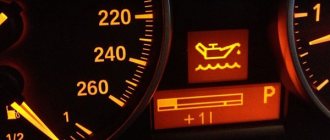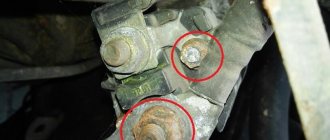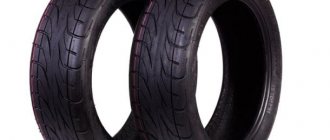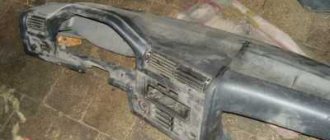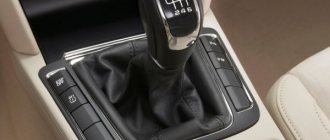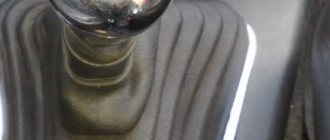If the timing belt has jumped
Like any other car component or part, the timing belt performs certain functions. It is entrusted with a significant option, and due to the convincingness of its functioning, the operational duration and security of the automotive power plant as a whole is determined.
Jumping or slipping of the timing belt is a fairly common phenomenon familiar to many motorists. The belt slips one tooth or several. We are talking about the teeth of the crankshaft or camshaft flywheel. It is clear that such a situation can lead to serious problems.
Signs and Symptoms of a Timing Belt Jumping
In internal combustion engines that use a timing belt in the timing drive, there is always the danger of it jumping over one or more teeth.
If the timing belt has jumped, the signs of this, depending on the design of the engine, may be the following:
- Unstable engine operation
- The engine stalls
- Power Loss
- Poor startup or inability to start at all
- Engine wedge
Using front-wheel drive vases as an example, the following happens:
- 1.1 and 1.3 liter engines there will be a meeting of valves with pistons with all the ensuing consequences;
- 1.5 and 1.6 liter engines the valves remain intact, but the engine begins to behave inappropriately.
- on some models of modern engines, the valves remain intact, but the rocker breaks, which makes subsequent repairs cheaper.
A similar malfunction, such as a timing belt that has jumped, is usually caused by either an oil leak that has reached the belt teeth, an antifreeze leak, a faulty tension roller, or extreme belt wear.
Timing device
To begin with, let us briefly recall how these mechanisms work. On most engine models, the gas distribution mechanism consists of the following components and parts.
So, the valves are controlled by the camshaft. Most often it is made of steel or cast iron. It is installed in the crankcase. This crankcase is covered by the timing cover. Also on modern engines, the camshaft can be found in the cylinder head. When the shaft rotates, it acts on the cams, which, in turn, act on their valve.
The design also includes pushers - they can be steel or cast iron. Their function is to transmit force from the camshaft and cams to the valves.
The mechanism has two valves - inlet and outlet. Their task is to supply the fuel mixture to the combustion chamber and then remove the exhaust gases. The valve is a rod with a flat head. The inlet and outlet elements are different from each other. The difference concerns the diameter of the head or plate. These timing elements are made of steel and heat-resistant steel (in the case of exhaust valves). The leg is a rod with a groove. It is needed to secure the springs. The valves can only move towards the bushings. To prevent oil from getting into the cylinders, sealing caps are used. An external as well as an internal spring is attached to each of the valves. Rods in the timing device are necessary to transmit force from the pushers to the rocker arm.
How to avoid timing belt breakage or slippage
First of all, it is necessary to strictly observe the timing belt replacement interval, in most cases this is 60,000 km. vehicle mileage. Next, keep an eye on the oil seals, including the crankshaft; oil drips under the hood are a sign of one of them leaking. Periodically check the tension of the timing belt; if it becomes loose, immediately take measures to tighten it. Always use original spare parts when replacing a belt. This also includes replacing the pump; buy only the one recommended by the manufacturer.
Photo reports on replacing the timing belt
Like any other car component or part, the timing belt performs certain functions. It is entrusted with a significant option, and due to the convincingness of its functioning, the operational duration and security of the automotive power plant as a whole is determined.
How to choose a new set of spare parts
Like other automobile spare parts, timing chains are counterfeited by handicraft and Chinese manufacturers, after which they go on sale. Cunning businessmen are constantly coming up with new ways to deceive customers, for example, placing their low-quality products in original packaging from well-known brands originally from Western Europe. To avoid running into a fake spare part when purchasing a part, follow these recommendations:
The chain is checked for deflection as follows: take it by one end and hold it flat. The second end should sag no more than 10 mm. If possible, check the hardness of the metal by carefully filing it with a file. The steel in high-quality products is hardened, and therefore is characterized by increased hardness and does not lend itself to filing.
Chain, gears, shoes and tensioner - complete replacement kit
Advice. The main technical characteristics of the chain are its size and number of links, and you need to select the part based on them. If you are in doubt, then do not buy a new spare part without removing the old one with which you can compare it.
Currently reading: Renault Logan heater: does not heat and blows cold ⋆ I Love My Car
If you are updating a chain drive with a significant mileage of the car (150-200 thousand km), then you will have to change all the accompanying elements - gears, tensioner and damper. When the chain has stretched after a run of 50-100 thousand km, it is not necessary to change the gears, but the tensioner must be checked for functionality. Also, don't forget to buy consumables - cover gaskets, O-rings and heat-resistant sealant.
Causes
The timing belt is an important element of the car, so it needs to be serviced promptly. The reasons that lead to its jump are as follows:
Contact of oil or cooling liquid on the belt surface
As soon as traces of technical fluid appear on the product, the belt should be changed immediately. Otherwise, this can lead to slipping through the teeth, sliding off the pulley, and even breaking.
It is a serious mistake when drivers simply clean the dirty surface and continue to use this product.
Practice shows that if liquid gets on the belt, it is completely absorbed into the rubber. It loses its properties and begins to stretch.
Late replacement
Most timing belt manufacturers recommend changing their products approximately every 60 thousand kilometers. However, this figure may vary up or down, depending on the quality of the product.
Improper use
It happens that a product may jump due to errors during its operation. A common example is a weakened roller or tensioner. When the belt tension weakens, there is a possibility of slipping from the pulley grooves. In the opposite situation, if when installing the belt, it is overtightened, this will lead to its breakage.
Slippage can also occur when one of the pulleys has strong play. Therefore, it is very important to monitor the tension level of all parts of the mechanism.
The labels are set incorrectly
Sometimes the jump is not visible outwardly, but the engine does not start well and immediately stalls. This can happen if the marks were knocked down or incorrectly set initially. A shift of even one tooth can cause problems with the motor. If the engine is diesel, it will not start even if there is an error of one tooth.
How is wear determined?
Now let's talk directly about how to understand or how to find out that the timing chain assembly has worn out and needs to be replaced. Diagnosing and understanding the signs of wear and tear will save you from costly repairs.
Similar problems can happen on any machine, be it:
- Volkswagen Polo Sedan 1.6;
- Kia Sportage;
- Volkswagen Tiguan;
- Kia Rio;
- Skoda Yeti 1.2;
- Hyundai Solaris;
- Hyundai Elantra;
- Kia Spectra;
- Volkswagen Jetta, etc.
But if you look into the regulations for the maintenance and operation of some cars, you will, to your surprise, find that on many cars the plant does not provide for replacing the chain at all during the entire operating period.
That is, replacement is not carried out at a certain interval. But this is only possible under ideal operating conditions, which are almost impossible to achieve.
Experienced motorists advise changing the chain approximately every 100 thousand kilometers. This is a normal resource for a quality part.
But it’s best to start from the characteristic signs indicating wear. Namely:
- When starting the engine or idling, the engine runs rough and intermittent;
- There are strange sounds coming from the engine. Moreover, they are heard most clearly at idle with low oil pressure. The knock is characteristically metallic;
- During the diagnosis, a strong output of the chain tensioners is noted, as well as characteristic signs of wear on the sprocket teeth.
But that's not all you need to know.
Measures to prevent serious consequences of a malfunction
If possible symptoms of belt or chain jumping occur, computer diagnostics should be performed. The malfunction can be determined by the ignition angle being too large. In static mode, diagnostics may not show an engine error, since the electronic components remain operational.
It is necessary to measure parameters in dynamic mode. At the same time, it is dangerous, especially if more than one tooth has slipped through. When an engine is running in which the timing belt has slipped, mechanical damage to individual components is likely.
You can determine the malfunction visually. This requires access to the marks and belt drive. Older gasoline cars use a strobe light as a control device.
Symptoms of malfunction
The main signs that the belt or chain has slipped:
- change in throttle response, power, engine torque;
- increase in the toxicity of exhaust gases, their shade;
- problems when starting the engine;
- a “check engine” error message appears on the dashboard;
- the occurrence of extraneous noise of a non-metallic (for belt drive) and mechanical nature (for both chain and belt drives).
If such signs appear, you should stop driving (start the engine), have the engine diagnosed, or contact a mechanic.
Causes and consequences
As a rule, a timing belt jump does not immediately lead to extreme problems, but the engine begins to function intermittently or does not start. The explanation is simple: the gas protection phases are incorrect, the general cycle of fuel supply and cylinder cleaning is disrupted.
The reason for timing belt jumping is often due to the fact that a little oil or coolant drips onto the rubber material of the timing element. The pump is leaking, the cuff of any shaft is malfunctioning - in a word, anything related to oil or liquids can lead to this.
Note. So, on cars with front-wheel drive (our “eights”, “nines”), a leaking oil pressure regulator becomes a factor in the entry of lubricating fluid. It is located above the timing belt.
In general, on VAZs, belt jumping leads to the following sad consequences:
- On versions with 1.1-liter and 1.3-liter engines, the valves collide with the pistons, which inevitably leads to tragic accidental consequences.
- On 1.5-liter and 1.6-liter engines, the jump will also not bring anything pleasant.
Replacing the timing belt
It is unnecessary to say that the condition of the belt needs to be given periodic attention. Most often, you should not miss fresh and suspicious oil stains that form in the area of the protective cover of the rubber component of the timing belt. Even the smallest amount of lubricant gives evidence that there is a problem.
Now consider this situation: signs of a jump are not noticed, but the power plant behaves extremely unpredictably. For example, the engine practically does not develop speed, starts very poorly and often stalls. In this case, the cover of the entire mechanism will need to be opened, and then make sure that the marks are set correctly.
Note. This is especially true for diesel cars, the power plant of which is incredibly sensitive to improper belt installation.
After the motorist is convinced that the marks are set correctly, the installation of the belt itself begins.
- You have to be extremely careful here. It is important to try to install the timing element from an open place, giving it the previous tension and thus moving it further.
- All teeth of the rubber timing part must fit evenly into all recesses of the flywheel.
- If this cannot be done, you must move the camshaft or crankshaft with your own hands so that the tooth of the rubber part fits clearly into the recess.
- At the end, the coincidence of the marks is again checked, and the crankshaft is turned two turns.
Why and when you need to change the timing belt
As is clear, the timing base is the camshaft, which is located in the cylinder head and pushes the intake/exhaust valves. The camshaft is driven from the crankshaft by a drive belt. Timely opening and closing of valves must be carried out in a strictly established order and in accordance with the engine operating cycles.
In other words, during the intake stroke the intake valve must open, so air or a fuel-air mixture (depending on the type of engine) enters the cylinders. Next, the consistency is compressed (the piston moves to TDC), at this moment all valves are closed. After the fuel charge is ignited and useful energy is released to the piston, the exhaust valve opens to remove exhaust gases from the engine cylinder. This is how the gas distribution process is carried out.
It becomes clear that any malfunction of the camshaft drive will lead to disruption of gas exchange in the cylinders, as a result of which the operation of the engine will be disrupted. As for the timing belt, this element is a rubber product that stretches, cracks, etc. over time. Belt slippage causes the valves to stop opening at the correct moment in relation to the engine operating cycles. Moreover, for many engines, a broken timing belt is especially dangerous. The fact is that if the belt breaks, then the gas distribution mechanism stops, the valves simply do not have time to close before the piston rises, an impact occurs, after which the valve usually bends, defects appear on the piston itself, etc. In such cases, the power unit needs to be repaired, and the repair itself will require significant financial expenses.
You should also take into account a number of reasons that can significantly reduce the service life of any belt. For example, engine oil getting on the timing belt as a result of leaks in the crankshaft front oil seal can quickly render the designated camshaft drive element unusable. Problems with the tension roller, jamming of the pump and other malfunctions are the reasons why the belt breaks or wears out quickly.
If signs of wear on the timing belt are noticeable or the time for its scheduled replacement is approaching, then it is not much to simply install a new element. When replacing, the belt should be set correctly. To replace and expose, you need to prepare tools; it is also better to service the car on a lift or in a garage with an inspection pit. The smallest set for this operation can be considered a jack, screwdrivers, spanners and socket wrenches, a socket wrench, preferably a wrench with a socket head, etc.
Read:
The car does not start after replacing the timing belt, timing chain or carrying out other work on the gas distribution mechanism drive. Main prerequisites, advice.
The main reasons why the timing belt jumps
This is how the timing belt works. The timing belt is an important element of the car, so it needs to be serviced in a timely manner. The reasons that lead to its jump are the following:
- Contact of oil or cooling liquid on the belt surface
- Improper use
- Late replacement
- External damage
- Incorrectly placed labels
- Difficult operating conditions
- Low quality spare parts
Of course, these are not all cases due to which the timing belt breaks or jumps. But this can be understood by the following signs.
Frequency and signs of replacement
According to the regulations stipulated by the manufacturer, the timing belt of Renault Logan cars is changed at a mileage of 60 thousand km or after 4 years of operation. In addition, it is recommended to inspect the drive parts and check and adjust the belt drive every 15 thousand mileage.
And although the belt itself (provided it is original) easily runs for 90-120 thousand, it is not recommended to ignore the factory requirements. The fact is that the pistons of the 8-valve engines K7J, K7M do not have sufficient recesses for the valve plates. If the belt breaks, the meeting of the valves with the pistons will be fatal - they will simply bend and the engine will fail.
When carrying out routine maintenance after 15 thousand mileage, you should definitely inspect the belt, even if the time for its replacement is still far away. Signs indicating that the product is about to fail:
Correct tension
The second most popular mistake is an incorrectly tensioned timing belt. Most often it is over-tightened, which will most likely lead to its rapid breakage. The consequences of a cliff are already familiar to you. It is no less dangerous to under-tighten - it can simply jump off at high speeds. To make sure the tension is correct, you need to try turning the long part of the belt 90 degrees. The effort should be excessive or too loose.
What happens if the timing belt jumps. All possible consequences, from “nothing” to “trouble.”
In this article I will try to describe in detail all the possible consequences of a timing belt that has jumped on an engineering vehicle, as well as the reasons for the tango action. And so off we go.
The very first and most common reason is incorrect installation. Inexperienced people in most cases make the same mistake when installing a new belt. Namely, when marking it, they do not take into account the tension on the side of the tension roller. Everything seems to be done correctly, but when tensioning The marks on the belt are knocked off by the roller. And it’s good if the pistons in the internal combustion engine are installed without plugging, then it’s not a big deal. But if not? The very first start threatens with serious problems. Namely, bending of the valves. And so, if you have a VAZ with an engine: 2111; 21183 ;21124 ... then you have nothing special to fear, just try again and that’s it. But if you have a VAZ with the engine: 21120; 21114; 21186; 21126 ... then it’s better to contact the service. These engines do not forgive errors in timing belt installation. For other models and For modifications, look for information on the Internet. The second most popular reason is incorrect belt tension. If the belt is not tensioned, then everything is clear, it will jump in the near future. And if it is overtightened? Overtightening the belt leads to its internal breaks. This does not happen overnight, but still. Over time, the belt becomes famous for losing its elasticity , which in turn leads again to the marks being knocked down. Only in this case, this can also lead to its rupture and premature failure of the engine cooling system pump.
Another reason could be banal savings. It can manifest itself either in untimely replacement of the timing belt kit (and the timing belt is replaced as a kit) or in the purchase of cheap spare parts of dubious quality. Then you can expect surprises not only from the belt itself, but also from the rollers or pump.
- And I will probably end this chapter with inattention during operation. Namely, when they do not pay attention to the leakage of liquids. This can be either engine oil or antifreeze. Any of them, if they come into contact with the belt, reduces its service life many times over. That is, if under normal conditions The timing kit runs 60-80 t.km. then in the case described above, it may become unusable after a couple of thousand kilometers, if not earlier. What happens if the belt jumps?
It all depends on how much the marks are lost. For example, regardless of the type of engine, if the belt jumps one tooth of the pulley, you may not even feel it. Unless under unfavorable conditions, for example in frost, the engine will start much worse than usual. It doesn’t really matter in which direction the belt jumped. But as a rule, it jumps towards the “late” ignition. You will most likely feel the two teeth. It’s unlikely that the valves will meet with the pistons, but such a jump will most likely affect the power of the unit. And both for the worse and for the better. It’s just like being “lucky.” But even if you are “lucky” and you feel an increase in “horses” under your hood, then you shouldn’t leave it like that. Firstly, the marks may continue to “go away”, and secondly, the fuel-air mixture burns incorrectly, and this can lead to serious repairs. Three teeth... Here everything is getting more serious. On many modern cars this is already critical. Since in pursuit of maximum power the designer increases the compression ratio in the cylinders, including reducing the combustion chamber. But if your engine has a reserve in the valve travel, then most likely you will feel a deterioration in dynamics, excessive fuel consumption, and perhaps you will hear popping noises in the intake. After all, the fuel combustion process will take place with the valves slightly open. Four teeth or more... This is where the story ends for engines with plug-in pistons. Since they won’t survive this. But without plug-in pistons, it won’t feel very good. Starting is very difficult, even non-starting. No dynamics, popping noises wherever possible and a complete lack of desire for the car to accelerate to more or less adequate speeds. Yes, yes, you press the gas pedal to the floor, and the car hardly reacts or begins to stall. The reason is trivial, the phases are tightly knocked down. And if before... the control unit somehow tries to equalize the fuel supply and ignition, then it will simply sign in its impotence with a check light on the dashboard.
But this also happens...
Timing belt jumped one tooth - signs
Like any other car component or part, the timing belt performs certain functions. It is entrusted with a significant option, and due to the convincingness of its functioning, the operational duration and security of the automotive power plant as a whole is determined.
ATTENTION! A completely simple way to reduce fuel consumption has been found! Don't believe me? An auto mechanic with 15 years of experience also didn’t believe it until he tried it. And now he saves 35,000 rubles a year on gasoline! Read more"
Jumping or slipping of the timing belt is a fairly common phenomenon familiar to many motorists. The belt slips one tooth or several. We are talking about the teeth of the crankshaft or camshaft flywheel. It is clear that such a situation can lead to serious problems.
According to the TSI scenario, or is gas to blame for the timing chain jumping immediately after 7 teeth?
Signs indicated that the gas distribution mechanism was to blame for the malfunction of the 1.6-liter i30 engine, and the gas was blamed for allegedly “drying out” the valves. By the way, it’s hard to disagree with this.
Unlike gasoline, which is sprayed by nozzles in engines with distributed injection actually onto the outer side of the valves, which cools their plates and even lubricates the sealing conical chamfers on the valve plates and seats, liquefied propane-butane enters the cylinders already in the gaseous phase, in which there is no some hint of the presence of liquid droplets.
In addition, gas fuel burns more slowly than gasoline, so it can cause additional overheating of the exhaust valves. As a result, the valves and their seats in the head are cooled worse, experience thermal overload and wear out more intensively, which, as opponents of gas convince, can cause premature sagging of the valves in the head, burning out of the plates and seats. So the presence of gas equipment in the engine in question made it possible to build the most daring hypotheses and even make bets about the reasons that caused the engine to fail, but disassembly had to dot all the i's.
And removing the cover from the timing drive led to a much more substantive discovery than any hypothetical assumption.
It turned out that the timing marks on the sprockets of the intake and exhaust camshafts did not match. This meant that the timing chain had jumped. For those who want to count the size of the jump, we marked the marks with a white marker. For the attention of those who do not want to count something, we inform you that the chain jumped straight through 7 teeth.
It is clear that a normal chain is not capable of such an impressive jump. The fact that the chain in the engine in question had already stretched considerably was indicated by the far extension of the hydraulic tensioner rod from the housing.
In light of the above, it makes sense to run ahead and show how the marks should be positioned and the hydraulic tensioner rod should be extended after the chain in the engine has been replaced. But in order to understand the consequences of jumping the chain, we must continue the disassembly in chronological order.
It was clear as day that what happened with the chain did not bode well for the engine. However, when we tried to manually turn the crankshaft by the shank, it turned out that it rotates freely, without any jamming or extraneous sounds, as if absolutely nothing had happened to the engine.
Be that as it may, the cylinder head had to be removed, which should have clarified the situation.
And then it turned out that the grooves were grooves, and the valve plates were still imprinted on all the pistons, without exception.
Since the compression measurements only approximately showed that the meeting with the pistons did not go without a trace for the valves, I wanted to give them a leak test using kerosene from a parts washing unit.
A couple of minutes after pouring kerosene, it turned out that the valves in all cylinders had lost their tightness to one degree or another.
The main sufferers, as one would expect, were the valves in the first cylinder, where, according to the readings of the compression tester, there was no compression at all.
Judging by the loss of kerosene, the valves in the fourth cylinder suffered the least damage, but externally the prints of their plates on the piston bottom were no different from the prints on the other pistons.
Since the valves had to be replaced, the head was sent for drying.
So, maybe the gas did contribute to what happened? Let's see what's happening on the valve seats in the cylinder head. There is, of course, minor wear, and some small shells even appeared on the sealing surface of the saddles, but there is no doubt that with these troubles the saddles would still live and live.
And the sealing chamfers on the valve plates are also quite healthy.
Obviously, in our case there is nothing to blame on gas. Everything rests on the chain, although it seems that it has not stretched much.
The last question revived memories of the much-discussed story of chain jumping in Volkswagen TSI engines. Then everyone dealt with the problem: Volkswagen specialists, independent experts and even ordinary car owners who could not understand why in their cars a chain that was considered eternal, jumping over the sprocket teeth, could damage the engine after the first 10,000 km.
Volkswagen nodded at the chain manufacturer, which did not replace the dies for making links on time and thereby allowed the production of defective products. Experts pointed out design flaws, in particular, the absence of a lock on the hydraulic tensioner, which prevents the rod from returning to the housing when the engine is turned off and the oil pressure is zero. Ordinary VAG customers were simply perplexed how their beloved concern could be so disgraced.
By the way, I remembered the wonderful Volkswagen engines. True, unlike the TSI, which was astonishing with the likelihood of a jump already after 10,000 km, judging by the mileage meter readings, by the time of the breakdown the i30 had driven 202,000 km, so there is nothing surprising in the fact that the timing chain was worn out and stretched.
But the hydraulic tensioner could clearly be the key to solving what most likely happened to our Hyundai. And although, again, unlike TSI, the hydraulic tensioner of the Korean engine has a mechanical blocking of the reverse stroke of the rod, it is noteworthy that it is almost completely selected. This is clearly visible through the inspection hole in the hydraulic tensioner housing.
I think there is reason to assume that with the hydraulic tensioner locked in the limit position, the engine worked for a certain time, which was enough for the chain to stretch further and slack to appear in its branches. The example of TSI engines suggests what should happen next if the car was parked on a slope without using the handbrake.
Later, after additional questioning, the car owner, happy that the chain jump did not spell doom for the engine, but only required the replacement of all intake valves, the chain and the tensioner, confirmed our guess. At this point, the matter of the timing chain in the i30 can be considered closed, but before calling it a day, it is worth reminding all owners whose cars are equipped with engines with a timing chain drive that the chain is not at all immortal. It was not eternal in the old days, but in modern engines experts recommend monitoring its stretching after the first 80,000-100,000 km. An indicator of an approaching problem can be the extension of the tensioner rod.
Source
Causes of belt and timing chain jumping
The main reasons for timing belt skipping are:
- natural wear of the belt during operation;
- abrasion of teeth as a result of misalignment of the rollers;
- increased resistance to movement in the event of a malfunction in the gas distribution system;
- foreign objects getting into the belt drive;
- pulley wear;
- stretching of a low-quality belt;
- overheating of the power unit;
- Tensioner malfunction.
Jumping of chain links (links) is less likely, but the consequences of such a malfunction are more serious. Causes of chain jumping:
- stretching during operation;
- chain damper malfunction;
- natural chain wear;
- temporary jamming of the gas distribution mechanism;
- overheating of the power unit;
- foreign objects entering the area of chain movement.
Features of self-checking the serviceability of the timing belt on Priora
If you are thinking about the need to replace a rubber product on a Priora, then it won’t hurt to initially check the belt drive. The inspection will reveal signs of wear and the presence of places where the product is deformed. To carry out the check, you will need to use a hex wrench set to “5” or a T-30 star-shaped bit (depending on the year of manufacture of the Priora).
The procedure for checking the belt drive is as follows:
- Use a hexagon to unscrew 5 mounting bolts, with which the front upper timing drive cover is secured.
Removing the timing cover
Marks on the tensioner pulley
This is interesting! The timing belt for the VAZ-2170 on the outer rim has the following information: engine type (21126 or 21127), number of teeth - 137, as well as marking with a product width of 22 mm.
The main nuances of the functioning of the timing belt in cars
It is extremely important to understand that the rubber timing element is responsible for transmitting the timing gear in the motor shafts. The latter, in turn, are responsible for the maintenance of the air-fuel mixture in the cylinders of the power unit.
If the timing belt jumps or breaks, the entire timing belt system begins to function differently. All this is manifested by shifts and malfunctions of the most important component of the car - its engine. It was written in detail above that in these cases the power of the power plant necessarily decreases, fuel consumption increases and starting deteriorates.
In addition, slippage or rupture of the timing component can cause failure of the piston-valve group in the engine. When the belt breaks, the valves open towards the piston, which leads to internal engine problems.
Monitoring the condition of the timing belt is a guarantee of preventing severe consequences for the power plant. But it is important to be able to control not only the appearance of the belt, but also the degree of tension. On their own, which is quite natural, it will be extremely difficult for a person with non-professional skills to diagnose the correct installation of the belt. In order not to make a mistake, you need to pay attention to the service life of the belt and the condition of the parts accompanying the operation of the element. In particular, ensuring the degree of tension and uninterrupted operation.
The period for replacing the most important timing part may vary. It depends on the specific car manufacturer. In addition, it is necessary to take into account such an indicator as the originality of the part. It is clear that “left” companies can easily produce defective belts or belts with a reduced service life.
It is also important to understand that on the modern market you quite often find parts of the universal type rather than the standard one. What does it mean? It's simple - universal parts, belts in this case, are not made for a specific car. They are not a priori characterized by good quality, and although they are cheaper than the original ones, they are not recommended for purchase.
You can distinguish an original belt from a universal one (there are several effective ways). If the part is universal, then to determine the service life of the belt and its replacement, you will have to take this into account. In other words, if the manufacturer indicated that the belt can last 70 thousand kilometers on his car, this does not apply to the universal one. This one will definitely last less.
As mentioned above, the service life of the belt on front-wheel drive VAZs is approximately 60-70 thousand kilometers. If the car was purchased secondhand, you should not trust its owner who claims that the belt is new, there will be no problems with it.
When choosing a new timing belt for your car, it is recommended to pay great attention to the material. If there are no marks left on the rubber after several folds in and out, most likely the material is fine.
But on the contrary, if even the slightest microcracks are noticed, it is better not to buy such a belt right away.
It is also recommended to check the belt model number with the number specified in the operating manual for a specific vehicle. The numbers are unlikely to match; it is a great success if such a belt can be found. But you can check belts in another way: by comparing the length, width and thickness of the old factory belt and the new analogue.
The belt must also be checked around its entire circumference. If protruding threads are noticeable on the ribs, the cord will be visible, it is better to immediately abandon this option.
If the timing belt has jumped or broken | Motorist's benefit
The timing belt on a car engine ensures synchronization of the crankshaft with the timing shaft (camshaft). On engines with a timing belt, breaking it or slipping even one tooth can lead to serious problems, which in the future may lead to a major overhaul of the engine.
Signs of a timing belt that has jumped on the pulley
If the timing belt has jumped, the symptoms may be as follows:
- Unstable motor operation
There may be several reasons why the timing belt may jump. Firstly, low tension, and secondly, the presence of oil on the camshaft or crankshaft pulley can cause the belt to slip. Well, and most importantly, a broken timing belt can ultimately lead to damage to the valves of the gas distribution mechanism and internal elements of the internal combustion engine (pistons, connecting rods, etc.)
Broken timing belt while driving
Causes of timing belt breakage
Why does the timing belt break? There may be several reasons for this, and one of the main ones is its wear and tear. Therefore, the manufacturer strongly recommends replacing the timing belt within the vehicle mileage interval specified by the regulations. Next, it is worth noting that the tension roller is damaged or weakened, which can undoubtedly cause the belt to break or slip. The cause of the break may also be a jammed water pump pulley. If the engine has two camshafts, then the failure of one can also be a consequence of a broken timing belt, but in this case the consequences can be completely different, more disappointing.
Consequences of a broken timing belt on a Lada Priora engine
How to avoid timing belt breakage or slippage
First of all, it is necessary to strictly observe the timing belt replacement interval, in most cases this is 60,000 km. vehicle mileage. Next, keep an eye on the oil seals, including the crankshaft; oil drips under the hood are a sign of one of them leaking. Periodically check the tension of the timing belt; if it becomes loose, immediately take measures to tighten it. Always use original spare parts when replacing a belt. This also includes replacing the pump; buy only the one recommended by the manufacturer.
Find out in more detail when it is necessary to change the timing belt on an internal combustion engine
Photo reports on replacing the timing belt
Opel Astra Renault Logan Audi A4 Audi 100 Chevrolet Lacetti Chevrolet Aveo On diesel engines Volkswagen Toyota Estima Emina 3C Renault 25 Mazda Demio
In internal combustion engines that use a timing belt in the timing drive, there is always the danger of it jumping over one or more teeth.
If the timing belt has jumped
, then the signs of this, depending on the design of the engine, may be the following:
• Unstable engine operation • Engine stalls • Loss of power • Poor starting or even impossible to start • Engine wedge
As a rule, if the timing belt jumps within two teeth, the engine will continue to run, but with visible interruptions. When the belt jumps more than two teeth, the consequences can be very different.
Causes of timing belt breakage
Why does the timing belt break? There may be several reasons for this, and one of the main ones is its wear and tear. Therefore, the manufacturer strongly recommends replacing the timing belt within the vehicle mileage interval specified by the regulations. Next, it is worth noting that the tension roller is damaged or weakened, which can undoubtedly cause the belt to break or slip. The cause of the break may also be a jammed water pump pulley. If the engine has two camshafts, then the failure of one can also be a consequence of a broken timing belt, but in this case the consequences can be completely different, more disappointing.
Consequences
The consequences of the timing belt jumping several teeth can be different - from replacing the timing belt itself to repairing the car’s gas distribution mechanism.
The amount of damage depends on whether the engine has recesses for valves in the pistons or not.
Groove for valves
A jump can occur while the valves are being lowered to inject fuel or release gases. The pistons are still moving and can hit the valves hard. This will lead to bending of the latter. This situation is similar to a broken timing belt. You can read more about which engines this happens on in this article.
To avoid this situation, it is recommended to do a timely inspection and, if necessary, change the consumable.
Aligning the belt according to the marks and how to set the timing belt without marks
Let's start with the fact that below we will focus on the general rules and instructions regarding how to set the timing belt. With all this, it should be taken into account that on cars with tuned sports camshafts, as well as on some models with 2 or only one camshaft, the order and features of the drive belt alignment may differ. To obtain clearer information, it is better to consult with specialists or separately study the operating instructions for a specific internal combustion engine model.
2163-13-13-011111-1
Head “16” – two bolts 1, head “13” – three bolts 2 and head “8” – bolt 3.
Remove the top timing belt cover.
Using an “18” socket with a ratchet, we turn the crankshaft clockwise by the bolt securing the auxiliary drive pulley and visually assess the condition of the belt and its tension.
If, using the force of the thumb and forefinger, it is possible to twist the drive branch of the belt (at a point located between the toothed pulleys of the camshaft and the coolant pump) by more than 60˚-70˚, then the belt is weakly tensioned and needs to be tightened.
To adjust the belt tension, remove the bottom cover. Using a 8" socket with a ratchet, unscrew the two screws securing the lower timing belt cover (for clarity, shown on a removed Renault Logan/Sandero engine).
Changes in engine performance after jumping
Typically, timing belt or chain jumping occurs as a result of the simultaneous action of several factors, for example, stretching, increased load during engine starting or driving. In this case, skipping can occur through the gears (pulleys) of both the crankshaft and the camshaft pulley. After this, the ignition shifts towards late.
The amount of this displacement in angular units depends on the number of timing belt teeth or chain links. A shift of the timing belt by one tooth corresponds to a change in the ignition angle by an amount equal to the ratio of 360 angular degrees/number of teeth. For example, if the number of teeth is 100, then the offset will be about 3.6 degrees.
A delay in the engine ignition angle by this amount often does not exceed the operating parameters of the engine.
When displaced by one tooth (link), the engine usually works. The following changes are observed:
- increased fuel consumption;
- difficulty starting the engine;
- increased toxicity of exhaust gases;
- reduction in engine response.
In the case when the belt has slipped by more than a tooth, the change in the ignition angle is more than 5 angular degrees. This is a critical value. In modern cars, the control unit usually turns off the engine to prevent serious mechanical damage, especially in engines where the pistons “meet” the valves in such a situation. Experienced drivers, when choosing or purchasing a car, are specifically interested in whether pistons and valves are found in a given model of engine installed in the car.
When a belt (chain) jumps over two or more teeth (links), the following are observed:
- misfires;
- uneven engine operation, the engine naturally “sausages”;
- engine start failure;
- extraneous sounds when the power unit is operating.
Operating a car in such a situation is extremely dangerous.
What happens in the engine when the belt breaks?
Today, engines with 8 and 16 cl are most often used. They are responsible for compression of the cylinders and for the release of exhaust gases. They move because of the camshaft, which unwinds and presses on the valve. The engine operating cycle is a periodically repeating series of sequential processes occurring in each engine cylinder.
- Inlet
- Compression
- Extension
- Release
The valves open and close at the right time. The drive is carried out by cams located on the camshaft. When the cam rotates, its protruding part presses on the valve, causing it to open. Cl. the spring closes it.
The cam is an integral part of the gas distribution shaft (drivers call it the camshaft). The camshaft has bearing journals and cams. Torque from the crankshaft to the camshaft is transmitted by a chain or timing belt.
If the drive belt breaks while the engine is running, the camshaft is no longer connected to the crankshaft. And it can stop arbitrarily in a position in which one of the valves is completely open. In this case, when moving upward, the piston may collide with the valve, which in this case bends.
A little theory
Chain drives transmit rotational force from the crankshaft to the camshaft, which is located in the cylinder head of overhead valve engines.
Chains are divided into 2 categories. They can be toothed or roller. Roller mechanisms, unlike gear ones, are not so widespread. Therefore, it is gear systems that are most often found on cars with a timing belt, which include a chain drive.
Gear units are distinguished by their high smoothness, they are quite reliable, and produce an insignificant level of noise during the operation of the internal combustion engine. In terms of their characteristics, the use of toothed chains brings them much closer to belt drives. One can argue endlessly about which one is better.
But we won’t dwell on this today.
The chain is tensioned due to the operation of hydraulic tensioners, for which motor oil is used as a working fluid. The lubricant is supplied through the engine lubrication system.
Depending on the number of camshafts, that is, camshafts, the number of tensioners also differs. On cars there are from 1 to 3 units.
The service life of the chain directly depends on what the element is made of, how high quality it is and the degree of effectiveness of the heat treatment performed. Similar requirements are placed on timing sprockets, since they constantly operate together with the chain.
More about Nissan: Repair manual for Nissan Primera 1990-1992. Full description, diagrams, photos, technical specifications
Do not forget about the influence on the condition of the unit of the engine lubrication system, the quality of the oil itself and timely replacement of the fluid.
In practice, when the part is made of high-quality materials, and the correct tension was carried out as part of the service, plus lubricant was introduced on time, then replacing the chain may be necessary at the same time as replacing the motor itself.
That is, you understand that a stretched chain cannot function for a long time and effectively. If you want to extend the life of this unit, initially take a high-quality chain, adjust its tension correctly and lubricate the drive generously with high-quality oil.
How to determine if a chain drive is faulty
Unlike the timing belt drive, which is located outside the engine, the chain with gears is located inside the power unit and is completely hidden from view. On the one hand, this is a plus: the mechanism makes less noise and is generously lubricated with engine oil, which increases its service life. On the other hand, without removing the valve cover it is impossible to visually assess the technical condition of the unit.
The first sign of a chain drive problem is a rumbling sound coming from under the cover when the power unit is operating. The rumble of a weakened chain cannot be confused with anything; it is heard from the side where the gas distribution mechanism is located.
Loosening with a gap of up to 1 cm allows the chain to jump when starting the engine
Having heard such a sound, the car owner should check the condition of the drive so as not to encounter big troubles associated with engine repair. There are 2 ways: immediately go for diagnostics to the nearest car service center, or remove the valve cover yourself and make sure that the section of the chain near the camshaft gear is loose. Worsening tension is caused by the following reasons:
- due to stretching to such a length that the tensioning device is unable to pick up the slack;
- due to a faulty tensioner;
- the damping plate is worn out or torn;
- Due to the high mileage of the car, all the parts of the mechanism have worn out - the chain, gears, tensioner and damper.
If an old-style mechanical tensioning device is installed in the car engine, then when the described symptoms appear, the first action is to tighten the chain with its help. To do this, simply loosen the outer nut holding the plunger spring and manually turn the crankshaft 1-2 turns. After which the nut is tightened again.
How to correctly set marks during the process of replacing/installing a belt on a “nine”
The timing belt on cars with front-wheel drive is carried out using a toothed belt. Each successive replacement of the AvtoVAZ belt is recommended after 65,000 miles. In addition to replacing the element itself, it is also recommended to change the roller.
The algorithm for replacing the timing belt is as follows:
- First of all, a new belt and roller are purchased (it is advisable that both elements are recommended by the car manufacturer);
- The car is placed on a level surface;
- The battery is de-energized (due to the exception of a short circuit during the work process);
- The car is secured with special anti-rollback stops;
- The protective cover is removed from the timing system;
- The power unit is set according to the marks.
How the marks are set It is important to be able to set the marks so that in the front part of the engine the mark on the camshaft wheel coincides with the upper boss on the belt cover. As for the second mark, it is connected to the clutch cover hatch
It is located under the distributor. This hatch is protected by a special rubber plug, which must be pulled out. And if the marks are set correctly, you should check the mark on the hatch: if in the triangle of the hatch you can see a mark that coincides with the end of the flywheel, then everything is correct
As for the second mark, it is connected to the clutch cover hatch. It is located under the distributor. This hatch is protected by a special rubber plug, which must be pulled out. And if the marks are set correctly, you should check the mark on the hatch: if in the triangle of the hatch you can see a mark that coincides with the end of the flywheel, then everything is correct.
The belt replacement procedure continues:
- The right wheel of the VAZ is dismantled (before this, a reliable support must be placed under the car body, for example, an empty 20-liter container for fuel on the edge);
- The protective type belly is disassembled to gain access to the shaft wheel and belt, respectively;
- The tension of the generator belt is weakened by moving it in the direction of the BC;
- The belt is dismantled;
- The bolt securing the pulley is unscrewed using special tools (mount, head, etc.).
- The tension roller clamps are loosened.
- The timing belt is removed along with the roller.
- A new roller is installed in place, and a new timing belt is installed.
Installing a timing belt is a rather difficult task. First of all, it is recommended to try to insert the belt on the right side of the “branch”.
Then, as soon as the belt is in place, you should tighten it with the tension roller step, and then fix it in this position.
At the final stage of work, check the identity of the marks again. For example, while the crankshaft flywheel is removed, you can additionally diagnose the mark on the crankshaft by comparing the mark on the shaft sprocket and the cutout on the oil pump boss. If the marks are not in place, you will have to repeat the installation again. This is done until the marks match. After this, the crankshaft is turned two turns, and compatibility is re-diagnosed. If the marks match, you need to proceed to assembly.
After everything is assembled, the power unit starts. If a characteristic hum appears, which should not be there, this clearly indicates that the belt is overtightened. You will have to re-adjust.
After closing the belt with the protective cover, it is recommended to check the belt for snagging, and the power unit for clean operation. If knocking and noise does not disappear, it is recommended to install the cover with bolts, thereby tightening it into the desired position.
2163-
We stop the crankshaft from turning by inserting the blade of a power slotted screwdriver between the upper wall of the window in the clutch housing and the head of the housing mounting bolt.
Be careful when performing this operation so as not to damage the elastic plates connecting the housing to the clutch pressure plate with a screwdriver.
Using a 18mm socket, unscrew the crankshaft pulley mounting bolt and remove the screwdriver from the clutch housing window.
Remove the crankshaft pulley.
If it is difficult to remove the pulley, pry it evenly from different sides with a mounting blade.
To further rotate the crankshaft, it is necessary to screw the pulley bolt into place. To ensure that the bolt is completely screwed into the threaded hole of the crankshaft nose, we install a spacer (bushing or set of washers) between the bolt and the shaft nose.
Before removing the belt, in order not to disturb the valve timing, it is necessary to set the crankshaft and camshaft to the TDC (top dead center) position of the compression stroke of the 1st cylinder.
Using the “E-14” head, we unscrew the technological plug from the threaded hole in the cylinder block, located on the front side of the block, in the area of the 1st cylinder - under the emergency oil pressure indicator sensor (shown for clarity on a removed engine).
As an installation pin, you can use the bolt of the upper fastening of the gearbox to the cylinder block (for clarity, shown on the removed power unit).
We screw two nuts onto the bolt and lock them so that the length of the threaded part is 75 mm.
The manufactured device - screw the installation pin into the threaded hole of the cylinder block.
Remove the timing belt.
After loosening the nut securing the tension roller, turn the roller clockwise, reducing the tension of the timing belt.
Attention! After removing the belt, do not turn the crankshaft and camshaft to avoid the valves sticking into the pistons.
When replacing the belt, the tension roller should also be replaced.
Unscrew the nut securing the tension roller and remove it.
We install the new tension roller and timing belt in the reverse order.
Source
How to find out when it’s time to change the timing chain: consequences of untimely replacement
Good day to all! As you may have guessed, today I will talk about when to change the timing chain, what it even is and what are the signs of wear or malfunction of this unit.
Surely you know about such a device as the timing belt, that is, the gas distribution mechanism. Using the example of Renault Logan, there was already talk about replacing the timing belt. But in addition to the belt mechanism, chain drive types can also be used here.
As part of today's material, we will talk to you about what a drive chain is, how to determine the wear of this unit and in what situations replacement is required. Knowledge of the theory is of great importance in matters of self-diagnosis and maintenance. No one forces you to change the chain yourself, since you can always turn to specialists.
Riley the timing belt does not hit 1 tooth - logbook Hyundai Getz 1.6 16V 2004 on DRIVE2
The receipt from the purchase was on fire. The owner threw up his hands, saying he blinked when it caught fire, but the car was running, so there was no need to get into it. I immediately thought it was error 340 - an error in the camshaft sensor circuit. The Internet said that it was the Khan sensor, that oil could get into its contact and that’s all, provided that the car was driving. I accidentally came across on some website about other cars in general that the same error was on, but as it turned out, the timing belt did not hit 1 tooth according to the marks. The car is moving, but the gas timing is already off. In contact with the Goetz group, the guru immediately said that if the timing belt is knocked off by 1 tooth, then the valves will knock. In the group of accent guides (their motor), essentially no one answered anything. And the other day, one comrade in the accent group made a note that error 342 was on, he opened the covers, and there on the camshaft pulley the mark did not match by 1 tooth, he set everything again, the error went out and the car froze. Well, I read a lot of manuals (most smart), bought a 22 head and went to the garage with jitters and trembling in my knees) I’ll say right away that there’s nothing complicated, just very scary.
I opened the lid - this is what happened
I reinstalled everything again, 100,500 crankshaft revolutions to check the marks - everything was fine, assembled, started - UUURRRAAA - the check went out! I've already driven 8 kilometers, and managed to get used to the car. BUT after the first start: the engine is quieter, the idle speed is lower, the auto pickup table is much smoother! The jitters remain! But you never know what will tear, unscrew, etc. brr))
This is interesting: Lada Priora temperature sensor: where it is located and how to replace it
Repair cost
The average price for replacing a belt and roller in car services ranges from one to three thousand rubles. The price range is due to the fact that replacing parts on foreign cars costs approximately 2–3 times more than on domestic cars.
If it turns out that you also need to change the engine water cooling pump and the crankshaft oil seal, then the price will increase by another 1 - 1.5 thousand rubles.
Although there is a huge selection of products on the market at different price levels, you should only choose brands recommended by the manufacturer or their high-quality analogues. Using cheap parts can lead to serious damage and expensive repairs.
For example, if the valves are bent as a result of a belt slipping, then almost the entire cylinder head will have to be replaced. Even if the repair is carried out by yourself, the cost of replacing valves, pump, belt, filling oil and antifreeze, and other parts will be at least 10,000 rubles.
Consequences of timing belt breakage and likely costs
The consequences of a break depend on the type of engine, the presence of grooves on the pistons, the quality of the parts and the reasons for the timing belt break.
The most common consequences:
- Buying and replacing a belt
- Engine repair.
Read more about possible engine problems
- Overhaul of the entire engine.
- The need to repair the entire gas distribution mechanism. The most significant problem is bent engine valves that cannot be repaired. This problem most often affects cars in which the combustion chamber is reduced or the pistons do not have recesses. In order to accurately determine the level of damage, you need to take the car to specialists.
- Sections of the piston system are deformed. Such damage most often occurs in Japanese cars. When the blade breaks at high speed, the bushing breaks and the pistons are damaged by the fragments. The consequences are an expensive replacement of all parts.
Diesel engines suffer serious consequences after the fabric breaks.
Car owners will need to replace a number of main parts of the gas distribution mechanism:
- Camshaft.
- Cylinder head.
- Connecting rods.
- Valves.
Costs for eliminating the results of timing belt rupture
The average cost of a valve is about one thousand rubles (excluding replacement). To calculate the total cost, you need to take into account the number of valves that need to be replaced. If there are sixteen of them, the total cost will be high.
Additionally you need to buy small parts:
- Timing belt or complete timing gear kit with all bearings.
- Cylinder head gaskets and manifolds.
- Valve plugs.
- Fasteners.
- Pump (all belt manufacturers recommend changing the pump at the same time as the timing belt)
If the driver carries out car repairs himself, he will also need various tools
Replacing rollers and timing belt: step-by-step steps
Initially, it should be noted that owners of a Lada Priora car with air conditioning will need to perform some steps to get to the timing mechanism. If you have a Priora with air conditioning, then initially you need:
- Using a wrench with a 15mm head, unscrew the generator tensioner pulley (not to be confused with the timing belt tensioner pulley). If the roller is humming, it is also recommended to replace it.
- After this, remove the alternator belt, which is also recommended to be replaced simultaneously with the timing belt drive.
- Now you will have access to the protective covers of the gas distribution mechanism.
Necessary tools for replacement
Having decided that you need to replace the timing belt on a Priora, you should prepare the necessary material and tools. The materials will require a new timing belt. Moreover, you can buy both the original belt and analogues. The original belt product is also equipped with two rollers: a tensioner and a thrust roller. The cost of such a kit is about 5 thousand rubles.
Original kit for timing system on VAZ-2170
If necessary, you should purchase a new pump if the car’s mileage exceeds more than 100 thousand km and the product has never been changed. If you are replacing the pump, you will also need to replace the coolant.
This is interesting! Antifreeze needs to be replaced every 2 years, and antifreeze every 4-5 years.
Of the tools to replace the timing belt on a Lada Priora, 16 valves will be needed:
- Head at "17".
- Set of open-end wrenches.
- Screwdrivers.
- Hex key or T-30 sprocket, depending on the year of manufacture of the car.
- Special key for adjusting the roller. Comes with a set of belt and 2 rollers.
It is not necessary to install the Priora in the inspection hole, since most of the actions will be performed in the engine compartment. Once all the tools and materials are ready, you can start working.

